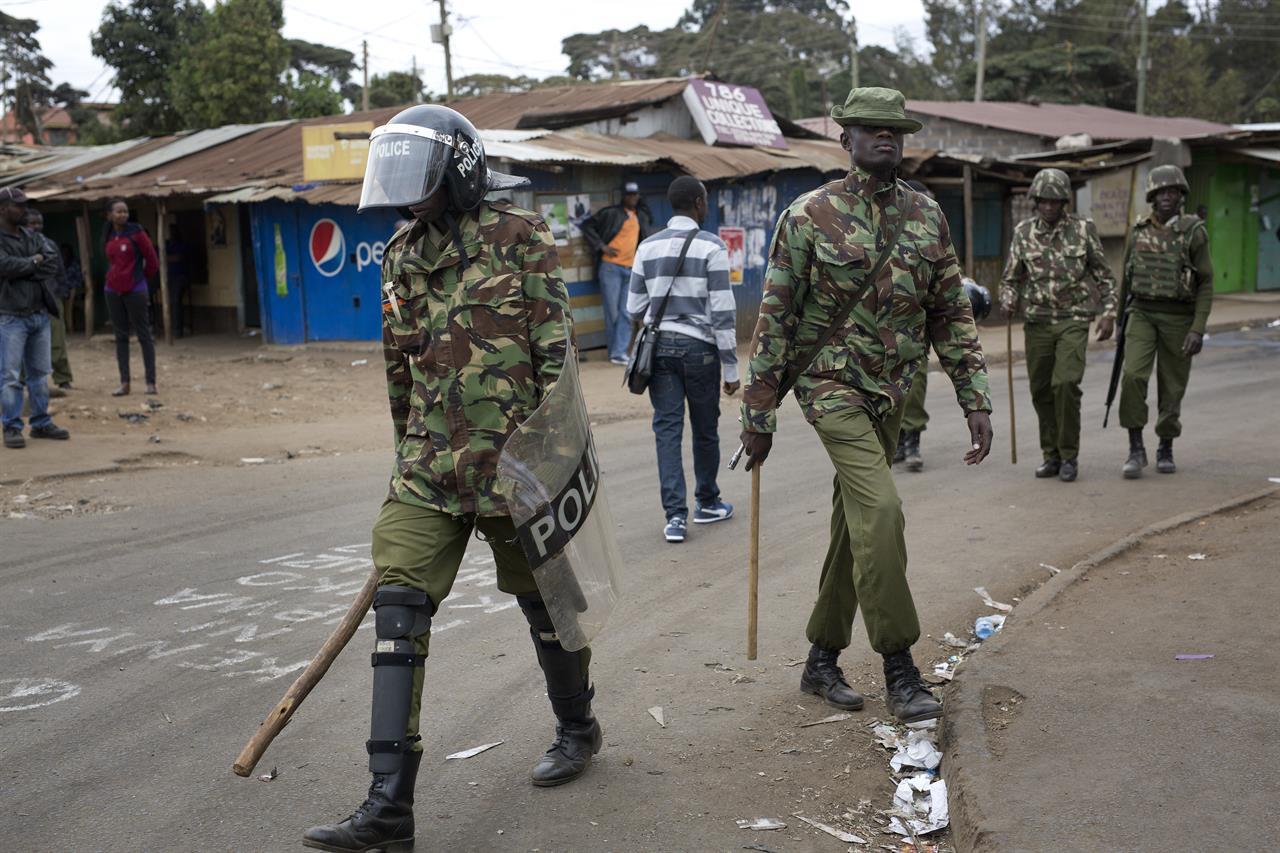Recently, security and safety of staff has been very much in the minds of employers in Kenya as they have sought to prepare employees for the potential consequences of post-election violence and disorder. Now that the elections have passed, largely without major disruption, some might fall back to ‘business as usual’ without thinking too much about the day-to-day responsibilities companies have towards their employees.
National and international Duty of Care Regulations clearly define the liabilities of managers in the case of failure of ‘adequate procedures’ to protect their employees. Recent examples have shown that any organisation – corporate or NGO – needs to comply. Significant financial penalties in the form of fines just add to the reputational damage that follows.
While Kenya enjoys an overall medium security risk level, the situation within the country is complex and should not be underestimated.
Anyone living in Kenya is quite aware of that. We secure our homes, offices and schools. We try to avoid driving late at night so that we don’t get hit by drunk drivers. We try to be supportive for the work of the police and judiciary in the hope of maintaining a deterrent to crime. Some of us living in Kenya sign up for security, ambulance or fire services in the hope that if we need them, they will be with us on-time.
Employers need to respond to the threat
But responsibilities for staying safe do not only lie in the hands of us citizens – employers in Kenya have their role to play as well. They have a statutory duty to provide a safe working environment. Historically, this duty has mainly been addressed at the permanent workplace (the office, factory, school).
Some of Control Risks’ clients still wrongly assume that their duty of care liabilities only apply to the office.
However, the Occupational Safety and Health Act states that an employer’s duty of providing a safe working environment is not restricted only to its direct areas of control. Employers also have a duty to inform employees of risks of imminent danger and to ensure that employees are trained, aware of and understand the risks that may be present outside their permanent location.
SELF HELP: Seven things you must change about yourself to succeed
The real challenge comes when employees are sent on business travels. Most organisations maintain a mix of sales teams, engineers, maintenance operatives, researchers, and technicians who will regularly be in the field. So the question is: How can an employer protect staff and deliver the statutory duty of care outside the direct area of control?
The very first thing an employer must do is assess the risk to the employee, which will be defined by the status of the individual travelling, his/her destination, but also for example by the transport method available. Flying a work team to Mombasa using hotel transfers and a researched hotel will represent a much lower risk than sending a work team to Kisumu using public transport, boda boda transfers and a personal choice of accommodation.
Related: Risk management firm launches intelligent security system
Once a good plan is in place, staff awareness training, use of the correct equipment, safe and inspected vehicles, driver training and behaviour monitoring are just some of the steps employers can take to reduce the risks for their staff. In our experience, responsible employers are providing many, if not most, of these services.
These measures will all help to prevent or reduce the chance of an incident occurring, but what happens when things go wrong and people are injured or find themselves in a threatening situation?
Struggling public services
A problem we are facing in Kenya is that there are inadequate emergency response and communication systems available to meet our needs in the event that a potential threat turns into an actual incident. We ask ourselves: How long will it take for the police to arrive after a home invasion? What is the ambulance response time in the event of vehicle collision? How long will I have to wait for a recovery truck on the side of a highway at night if my car breaks down?
ALSO READ: KK Security boosts mobile response service
We will struggle to find statistics in Kenya to analyse how much our risk of loss, injury or death is amplified by slow, inadequate or no response at all. But we will probably all agree that a fully equipped life support ambulance arriving within minutes is more likely to save a life than a less well-equipped vehicle arriving after an hour because the ambulance is coming from a hospital 50km away.
Closing the response gap
While we struggle to reduce response times and improve response capability, the good news is that there are now services and technologies available which can help to close the gaps in communications and response. Companies can play a key role here in offering services to their employees that are not – or not adequately – covered by the public sector.
It all starts with communication: Providing a professional 24/7 security and safety response helpline is a key ingredient. This should be combined with an emergency panic-button app that not only alerts a 24/7 response centre, but also confirms the precise location which enables a faster, more precise response.
The next key element is to be able to assess the situation, provide professional advice, and then contact the appropriate responders to arrange emergency support – be it medical, police, breakdown services, fire response or even insurers. There is a mantra within the emergency response community that “seconds save lives”, and so the lines of communication must be robust.
Employer branding
The benefits of such response services for companies and employees are significant. By professional initiation and coordination of response services, together with security advice by the provided response experts and rapid escalation to the company’s management, incidents can be assessed and managed in the shortest time possible, and with the best available resources. Employers can offer these benefits to all employees, or higher-risk groups, as part of an employee attraction and retention strategy, and enjoy high-benefit solutions at affordable costs.













Leave a comment